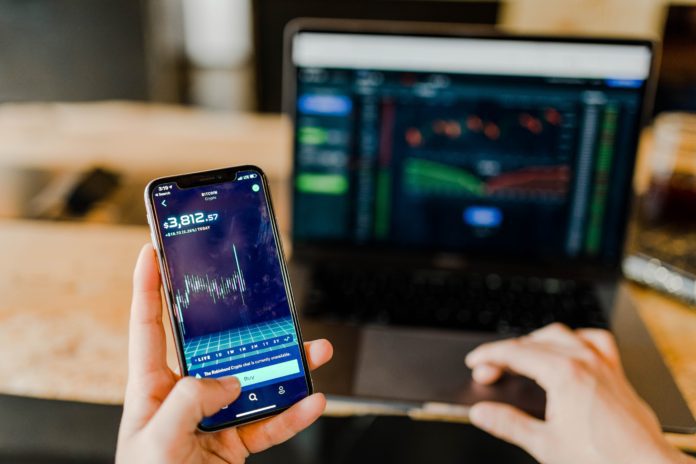
Sometime last year, I went into forex trading for the first time in my life. I had heard a lot about Forex trading on the radio, several seminars and workshops here and there. But it has never piqued my interest. In my head, then, I placed it in the same group as those pyramid schemes.
But my stand on Forex changed last year. We are all familiar with the pandemic and its effect on our incomes in 2020. So, in a bid to make quick money to complement my low salary at the time, I decided to give Forex a chance. And that was my first mistake – I wanted to make quick money from Forex.
I made several other mistakes, and that cost me a lot of money. That’s because I didn’t find an article like this that explains forex trading for beginners in a language I understood. Lucky you.
Let’s start with an introduction – what exactly is this forex trading?
Contents
What is Forex trading?
Forex is a combination of two words – foreign and exchange. So, Forex is simply a foreign exchange.
Therefore, forex trading is a global market where banks, institutions and individuals trade different currencies of countries worldwide.
Also known as FX, it is a form of quick investment (some people would call it betting) predicting the direction in which a currency would go against another currency to make profit. For instance, some people would have made a lot of money in the last few months predicting the fall of naira against the US dollars.
When a price rises against another, it’s called Bull run, and its fall is known as Bear run. The two names came from the way those two animals attack their opponents. By the way, those are just two of the many terms used in the Forex world. More on that shortly.
Also Read: How to Succeed with Binary Options Trading
How the market works
Exchange of currencies takes place on the foreign exchange market, which is open 24 hours a day, except Saturday and Sunday. In other words, there are no particular forex trading hours as you can trade any time of the day. Foreign exchange trading occurs over the counter (OTC), which means there are no physical exchanges (as there are for stocks). A global network of banks and financial institutions monitors the market (instead of central exchange, such as the New York Stock Exchange).
Forex trading consists primarily of institutional traders, including bankers, fund managers, and multinational companies. However, individuals like you are also able to trade and make profits. But the understanding that the direction the market would go is often influenced by these “big guys” is crucial to your success in Forex trading.
Types of forex traders
There are four different types of Forex traders, and it’s always advised that you choose the type that’s best for you and stick to it. They include:
- The Scalper
Scalpers are quick traders who want to take advantage of a moving market quickly. Typically, each of their tradings only lasts some seconds to minutes, and they are out. Their main goal is to grab small amounts of pips (see forex trading terms) as often as possible throughout the busiest times of the day.
- The Day Trader
Unlike Scalpers, Day Traders typically pick a side when they trade early in the morning and going back to end the trade with a profit or a loss at the end of the day. It all ends in the evening – day traders don’t leave their trades to run overnight.
- The Swing Trader
A swing trader is someone who holds on to a trade for several days to several weeks at a go. To make sound trading decisions, these traders spend a couple of hours every evening analyzing the market.
- The Position Trader
A position trader is someone who makes trades for an extended period of time, whether it be weeks, months, or years. In analyzing the markets, these traders understand the dominant factor is fundamental themes. They therefore base their decisions on this.
You must make sure the style you select matches your personality.
Constantly altering your trading style will only cause trouble, and will blow your account.
However, as a starter, it’s always best to start with scalping. That way you are able to quickly take profit and limit losses.
How Currencies are traded in Forex
The symbol of each currency is a three-letter code, much like the ticker symbol of a stock. More than 170 currencies are used in forex trading, but the U.S. dollar represents a large part of the activity, so it can be especially helpful to know the code for the dollar: USD.
Second on the list of the most popular currencies is the euro, which is accepted in 19 countries in the European Union (code: EUR).
The remaining other popular currencies in the forex market are the Japanese yen (JPY), the British pound (GBP), the Australian dollar (AUD), the Canadian dollar (CAD), the Swiss franc (CHF) and the New Zealand dollar (NZD).
All forex trading involves the exchange of two currencies. Approximately 75% of forex trading is done in the following seven currency pairs, which are called the majors.
- EUR/USD
- USD/JPY
- GBP/USD
- AUD/USD
- USD/CAD
- USD/CHF
- NZD/USD
Forex trading terms and meaning
- Currency pair
Even though currencies are traded there, we can’t buy or sell single currencies on the Forex market. Trades in the market are always made on currency pairs. A currency pair is made up of two currencies – the base currency and the counter currency.
For instance, EUR/USD is a currency pair. By purchasing the EUR/USD pair, we are actually buying the euro and selling dollar. In the same way, when the EUR/USD pair is sold, the euro is sold, and the US dollar is purchased.
- Major pairs
Currency pairs are typically classified into the major, cross, and exotic pairs. Major pairs are currency pairs that combine the US dollar and any of the other seven major currencies (EUR, GBP, CAD, JPY, CHF, NZD, AUD.)
Also Read: 6 Awesome Ways To Make Money Online in Nigeria | 2021
If you’re just getting started in Forex trading, concentrate on the major pairs, since they offer very low transaction costs as well as sufficient liquidity to avoid high slippage. Some of the major pairs include EUR/USD, GBP/USD, and USD/CHF.
- Cross pairs and exotics
In contrast, cross pairs consist of any two major currencies other than the US dollar. The transaction costs of cross pairs are higher than those of major pairs, and traders may encounter slippage at times when liquidity is low. The volatility of cross pairs is also higher than that of major pairs. Cross pairs include EUR/GBP, EUR/CHF, and AUD/NZD, for instance.
The exotic currency pairs are those that do not rank among the 10 most prominent currencies in the world, such as the Mexican peso, Turkish lira, or Czech koruna. It is best to leave the trading of these currencies to the professionals, since they are extremely volatile.
- Exchange rate
All traders follow the exchange rate of a currency pair. The exchange rate is often simply called the price, because it tells us the price of one currency in relation to another. When the EUR/USD exchange rate occurs at 1.15, it means that one euro costs $1.15.
- Bid/Ask price
During any given period of time, there are two exchange rates or prices for each currency pair – the bid price and the ask price. How do they differ? Essentially, the bid price is what buyers are willing to pay, while the ask price is what sellers are willing to take.
A bid price is always lower than an ask price because of its nature.
- Spread
You have to pay transaction costs each time you enter into a trade. The bid-ask spread is the main cost Forex traders incur since most brokers no longer charge commissions and fees to place trades. As soon as bulls buy at the ask price (the price at which sellers are willing to sell), they would be at a loss which equals the bid/ask spread.
It is essential to pay attention to the bid/ask spread as a day trader or scalper since it can eat into your profit margins. Position traders and swing traders whose trading focuses on longer-term strategy reduce the spread effect by opening fewer positions and aiming for higher profits.
- Pip
It is common for Forex traders to use the term “pips” when discussing profits and losses. PIPs are short for Percentage in Points, and they are the smallest increments up or down in an exchange rate. Pip is usually equal to the fourth decimal of most currency pairs.
- Pipette
Pips represent the fourth decimal place in most currency pairs, but there is an even smaller increment at which prices can change. It is called a pipette, and is equal to 1/10 of a pip, which is 10 pipettes equal to 1 Pip.
- Going long/short
It is likely that you have heard that you can go long and short in one currency pair. To go long is to buy, while to go short is to sell.
- Support
In technical analysis, support and resistance are key concepts. Support and resistance trading plays a significant role in technical analysis because technical traders believe that price moves reflect available fundamental information.
In markets, there are many speculators, hedgers, traders, investors and gamblers. Memory plays a role in the fact that humans remember certain price-levels where prices have had difficulty breaking through the past. When the price is going down, this level is known as Support.
- Resistance
Resistance works the same way as Support, just that it is in the opposite direction. When the price is appreciating, that point where it has difficulty breaking in the past is known as Resistance.
- Leverage
Traders can profit from rising and falling prices on the Forex market, which is open 24 hours a day. However, another reason why a large number of traders are drawn to the Forex market is leverage.
Through leverage, traders can open larger positions than their trading accounts otherwise would be able to support, and retail brokers in the Forex market offer extraordinarily high leverage ratios.
By way of example, 100:1 leverage enables a trader to place a 100-fold larger position than their initial deposit. That is, with just $1,000, you can open a position of $100,000!
Remember, however, that trading with high leverage is risky since it increases both your profits and losses. As a beginner, you may want to consider trading at a lower leverage until you have gained enough experience.
Also Read: ICT Enabled Online Business Ideas
- Margin
In leveraged trading, your broker will hold an agreed amount of your account size as collateral for the trade. This collateral is known as “margin”, and its size will be determined by the leverage ratio you’re trading on.
- Lot size
Profits and losses in dollar value are influenced by the position size you take on the market. One standard lot (standard position size) is equal to 100.000 units of the base currency on the foreign exchange market. As an example, if you buy a lot of the EUR/USD pair, then you’re actually buying 100,000 euros with a pip value of $10.
Trading tips for beginners
- Start by learning the Basics
That sounds pretty simple, but what exactly are the basics? Understand buy orders, sell orders, what pips mean, and what stop losses and take profits are. Also, be familiar with forex trading tools and forex trading app. They are the very basics of trading that you will utilize every day and something that you should learn from early on. Following these basics will provide a good foundation for your strategy.
It is possible to get this information from various sources, including some free guides on the web, mentors, and both free and paid courses. However, to learn consistently, it’s essential to get your information from a single source. Babypips is a highly recommended place to learn all of these.
- Come up with your Strategy
Finding a strategy online and following it may seem simple, but unfortunately, that is not exactly the best approach. Initially, it may work, but when things don’t go as planned, you won’t know what went wrong, and since you are unfamiliar with the strategy or how it works, you won’t know how to adjust it to meet the changing needs of the market.
After you have gained some of the basic knowledge we discussed above, you can start creating your own personal strategy. Trading plans and strategies consider everything, including your risk, your profits, and the currencies to use. As a personal rule book, it tells you how to enter the markets and how to exit them.
- Get the best broker for you
It is understandable that it can be quite confusing to decide which broker to use as there are so many out there, and so many people constantly promote the one they are currently using.
Choosing a broker is all about matching up your strategy with the features of the broker. For example, if you have a strategy that will take small profits, then you do not want a broker that has very big spreads.
- Begin with a demo account
After all is said and done, start trading with a demo account. A demo account allows you to trade live in the market without committing any of your money. This way you are able to test all your different strategies and see the results before investing your money.
Almost all brokers offer a demo account so just sign up with one and begin trading. Some brokers even offer some sort of promo with their demo account – if you are able to make a particular amount of profit on demo account within a specific period, the profit will be added to your live account when you finally fund it and start trading.
In conclusion
Forex trading is highly profitable and risky at the same time. It takes serious caution to not lose money at first. However, if you painstakingly follow the tips in this guide, then you are good to go.
On a final note, make sure you don’t allow greed to get the best of you. The easiest way to lose money in forex is to be greedy. Learn to know when to close a trade and take your small profit. And avoid the temptation of trying to grow $50 to $1000 in three days – you will end up losing blowing up your account.
And oh, avoid pyramid schemes disguised as Forex!
Do you have more questions on forex trading? Or perhaps you have some experience and want to share some tips? Do leave a comment.
RECOMMENDED ARTICLES























